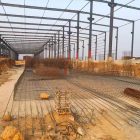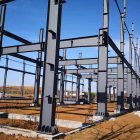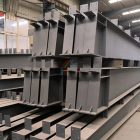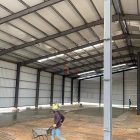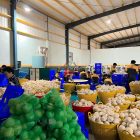Steel structure factory building construction steps
The structural form of steel structure factory building is frame. Based on the component form, weight, location and actual conditions required for construction, it is necessary to prepare embedded parts, columns, beams, purlins, etc. When building a steel structure factory building, you should follow the principles of installing steel columns, supporting between columns, and placing steel crane beams in place in advance. So what is the order of construction steel structure factory building? What are the advantages?
Steel structure factory building construction steps
1. Preparation of embedded parts (can stabilize the factory structure).
2. Columns are generally made of H-shaped steel or C-shaped steel (usually two C-shaped steels are connected with angle steel).
3. Beams generally use C-shaped steel and H-shaped steel (the height of the intermediate area is determined according to the span of the beam).
4. Purlins: Generally, C-shaped steel and Z-shaped steel are used.
5. Supports and braces, usually round steel.
6. There are two types of tiles. The first is single-piece tiles (color steel tiles). The second type is composite board. (Polyurethane or rock wool is sandwiched between two layers of color-coated boards to provide warmth in winter and coolness in summer, as well as sound insulation and fire protection).

Advantages of steel structure factory building
1. Light weight, high strength and large span: Although the density of steel is higher than other building materials, its strength is very high. Under the same stress, the steel structure has a small self-weight and can be made into a structure with a larger span.
2. Short construction period: The frame components of the factory building is mainly prefabricated in the factory and installed after being transported to the site. The assembly work is convenient for construction.
3. High fire resistance: When the surface temperature of the steel is within 150°C, its strength changes very little. When the temperature exceeds 150°C, its strength decreases significantly.
4. Anti-seepage and waterproofing: Rainwater infiltrates mainly through nodes or gaps. To achieve anti-seepage and waterproofing, it is necessary to use sealing washers at the screw mouth and then use hidden fixation, and use sealant or welding at the overlap of the plates.



